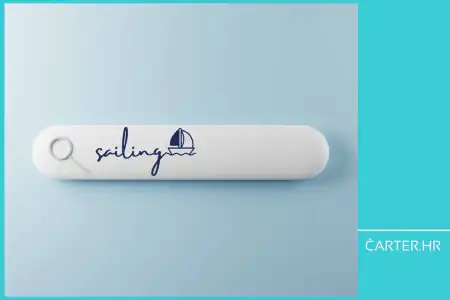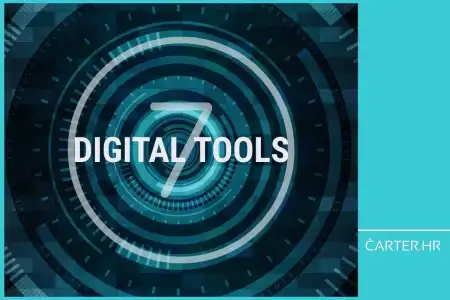
- 23.09.2025.
- News, Management
The new article by Andreja Fazlić for čarter.hr raises questions that are rarely asked when we talk about digital transformation. And not all answers are what you might expect. What has really changed after INBOUND 2025? What does a digital strategy look like when people aren’t left behind? If AI and HubSpot still feel unfamiliar, this article is a clear and practical place to start.
This is my 36th article for charter.hr and if you have read at least one, you know that the key topics I cover are: strategic growth, digital transformation, and the practical steps needed for that transformation to truly be successful.
Recently, I had the opportunity to participate in HubSpot’s INBOUND conference in America, which gave me additional confirmation and deepened my perspective on all the topics I deal with daily in my work with clients.
INBOUND and HubSpot have been setting trends and standards for the future of marketing, sales, customer support, as well as digital transformation and human-centric business for years.
Things are revolutionary, but at the same time they are not. What is truly crucial to understand is that every moment, this very one right now, is the right moment for change. There is no room for postponing or waiting for “ideal” circumstances. Digital transformation, the collective one – because the customer has digitally transformed (and you have digitally transformed as a customer!) – is already happening. It is important that you are an active participant, not an observer.
This time it steadied me in my cognitive biases and additionally inspired me to communicate more clearly and strongly how important it is to maintain focus on the human-centric approach and a structured, guided process through all phases of change during digital transformation. Because the question is not “when,” but “how quickly” you will make strategic decisions and learn to meaningfully use new technologies so that your company becomes relevant, competitive, and even capable of further growth.
That is why I ask you an open question: How do you actually plan to implement this change? And, are you truly ready for it?
Below I share selected thoughts and insights from INBOUND and concrete guidelines that can help you implement the change clearly, calmly, and with a good plan. If needed, I am also available as support.
INBOUND 2025
The central theme of this year’s INBOUND was how the combination of human authenticity and advanced technologies can help organizations grow faster, smarter, and with people in focus!
From my experience working with various organizations, I know that today the advantage is not in the best technology, but in the best combination of human approach, data, and AI into one sustainable strategy.
We have long known that the traditional sales funnel no longer reflects reality. Marketing and sales activities have not been linear for a long time, and the customer has changed behavior – their attention is scattered, interactions spread across various digital channels, while “zero-click” searches and AI answers are changing the source and quality of traffic to your website.
And again, the question from the beginning of the text – how quickly are you ready to start learning and adapting?
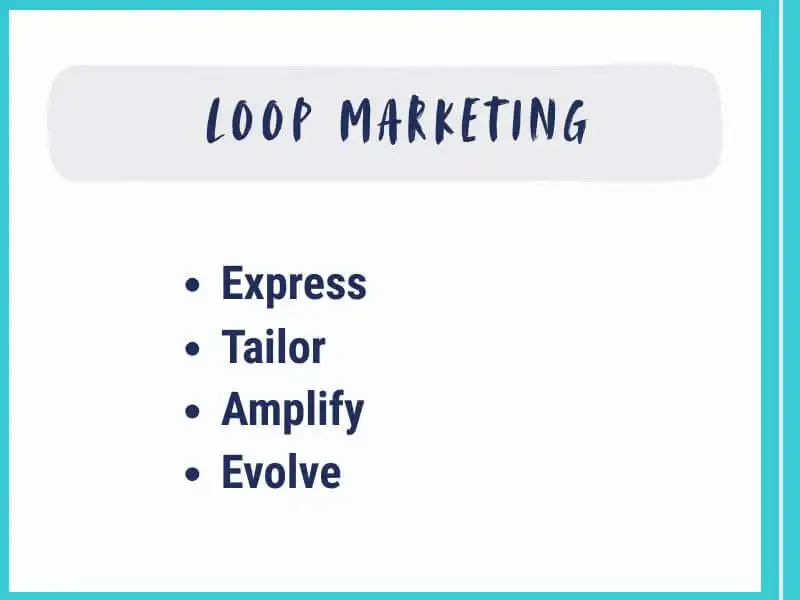
HubSpot offered its support and response through the Loop Marketing Playbook, a new circular, iterative growth model that includes four key phases:
Express: clear definition of brand identity and style(!) as a platform for communication
- Why is it important? The first thing AI needs is a clear definition of your “who we are,” “how we sound,” and “what we offer.” Clarity here saves time, money, and results in consistent communication. Lay the foundation, define the mission, tone, visual identity, and what sets you apart from others.
Tailor: hyper-personalization of messages based on available data and with the support of AI
- Why is it important? Customers do not expect a mass message, but communication that shows understanding of their needs. Use data from the CRM and AI to adapt every email, offer, post, so AI can help create the feeling for the customer that “this is just for me.”
Amplify: content distribution across various channels to reach customers exactly where they are
- Why is it important? Customers live on multiple platforms, and AI algorithms decide what they will see. Increase visibility at all digital points of interaction; from social networks, newsletters, websites, to “answer engines” and new AI search tools. Think broader than one channel!
Evolve: continuous measurement and adaptation with the help of AI, where the speed of change is crucial for competitiveness
- Why is it important? Because the time of large campaigns “set it and wait” is over. “Always on” is the only approach that makes sense. Implement the measurement of everything you do and adapt on the go – that does not mean without structure! AI helps you quickly recognize patterns, changes, and new opportunities, and the faster you learn and react, the closer you are to real business growth.
This approach complements existing models and brings an updated perspective that emphasizes long-term relationships and organic growth through engaged customers as active brand advocates.
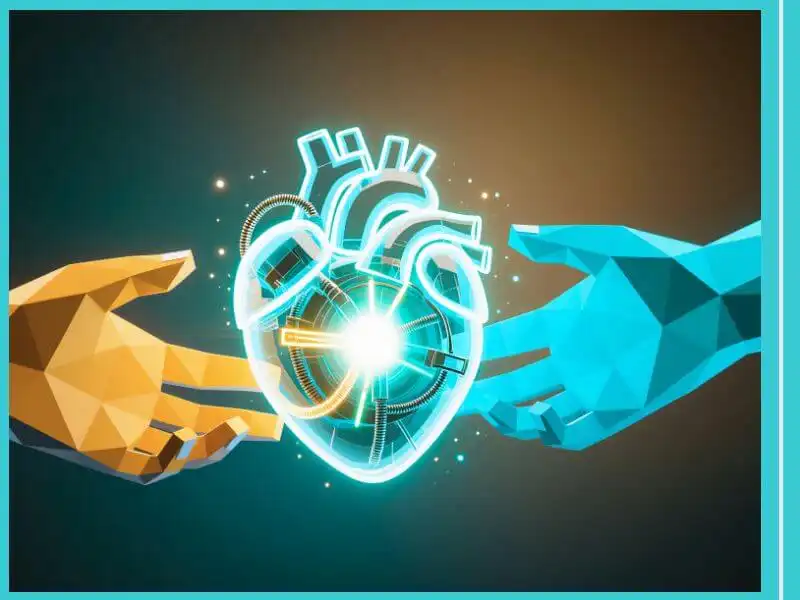
Human authenticity + AI = The power of hybrid teams
The foundation of current innovation (?!) in business lies in a clear understanding that artificial intelligence, technology in general, is not a replacement for people, but a powerful tool that empowers them and enables them to be more effective.
AI takes over routine, repetitive, and data-intensive tasks, such as automation, analytics, and prediction, while people remain focused on what is irreplaceably human: strategic thinking, vision, and empathy. It is precisely this synergy of human and artificial intelligence that forms the core of the new business paradigm. If you read my articles regularly, the idea is not so new to you.
HubSpot recognizes this transition through the concept of hybrid teams, in which “AI ops” specialists and “power users” (advanced users) use AI technologies to exponentially increase their impact and transform business processes. More than 200 AI-powered innovations were presented at INBOUND, creating a technological ecosystem in which AI assists and amplifies human talent and creativity.
However, it also emphasizes – it is necessary to manage change! For AI technologies to truly bring business transformation, it is essential to invest in continuous education and the development of people and their mindset within organizations. Starting with you. You, as the leader, are the first in line, everything begins with you. You are the key factor in overcoming internal resistance to new tools and in achieving full (or partial) integration of AI into everyday business processes.

Data as the foundation of success and the importance of aligned collaboration
Without quality and unified data, there is no sustainable business transformation. HubSpot’s new Data Hub, in combination with Smart CRM, represents a true little revolution! It is no longer just about collecting data, but about a living system that connects, cleans, aligns, and enriches them with intelligent insights.
However, even the best, most sophisticated tools will not deliver results if there is no orchestrated process between people in marketing and people in sales. Shared goals and a unified database are the foundation for fulfilling the full potential of AI technologies, whether through hyper-personalized campaigns or smooth, automated customer journeys. Without that, everything still remains among those 70% of unsuccessful digital transformation projects. Because the key to growth and success has never been only in the technology you use, but in the results you achieve. Today’s customers want measurable, tangible value and better service – it is simple – that is what is needed for their satisfaction. And when the customer is satisfied, excellent results will not fail to appear!
From my own experience working with clients, I can say that digital transformation, especially in combination with the implementation of AI technologies, is a challenge that must not be taken lightly or superficially. I often see companies rushing to “catch the trend,” but without a structured plan and a human-centric approach, which almost always brings fragmented results, high costs, and frustrations.
The true strength lies in thoughtful process management, and that means understanding not only technology, but also how it affects people within the organization and their daily interactions. The introduction of AI is not only a technical issue, but also a cultural and strategic change. That is why the key to success is a long-term vision that puts people at the center of every step, and continuous learning and adaptation as an integral part of business.
My practical advice? Do not look at transformation as a project with a final deadline, but as a process that is constantly evolving. Accept small but steady steps, test, learn, and iterate. And most importantly, be honest with yourself, your organization, and your customers – transparency and authenticity create trust that AI or any technology cannot replace.
Remember: whatever technology achieves and however fast it advances, the human desire for real relationships and authentic interaction only grows. And your customers are those people.
What I personally like the most is the fact that HubSpot, as a global leader, has established itself in this human-first narrative in the context of digital transformations and business innovations, because I myself deeply believe that this is the optimal way to achieve competitive advantage, as well as a new level of meaningfulness in business – which is the true and only goal of every transformation.
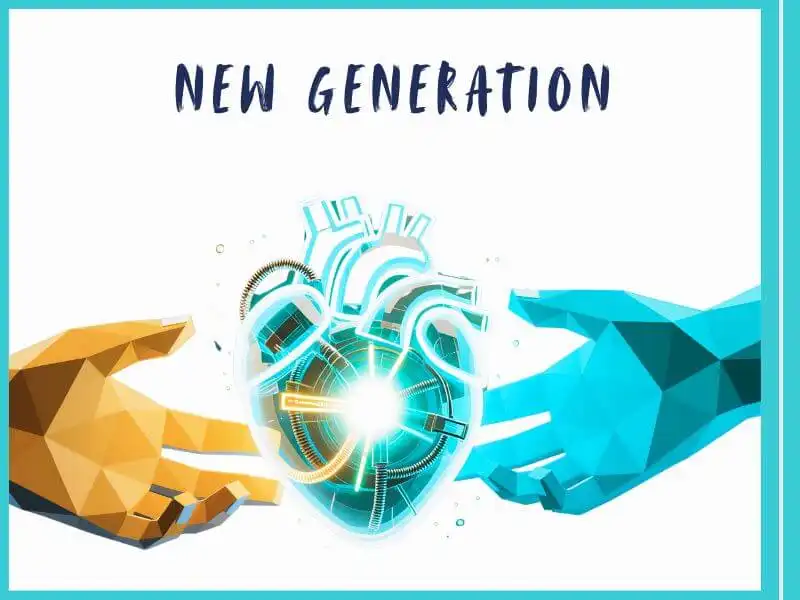
New generation of HubSpot functionalities and intelligent tools
This year at INBOUND, HubSpot presented a true technological renaissance, launching more than 200 new features and AI solutions designed to accelerate business, optimize the use of data and human resources. The central innovation is the All-New Data Hub, which by unifying all data (structured, unstructured, and external) enables companies to have a single source of truth, automatic detection of trends and data cleaning, as well as flawless analytics for smarter strategic decisions.
The Reimagined Smart CRM automatically saves information from all customer interactions, uses Smart Insights to extract the most relevant knowledge, and enables data visualization through personalized views. In practice, this means that there are no more “seas of partial spreadsheets” or manual entries, everything is automated and enriched in real time.
A special breakthrough is represented by Breeze AI agents and Breeze Assistants, a total of 18 digital team collaborators for marketing, sales, and customer support, from Customer Agent to Prospecting Agent, who help segment leads, personalize communication, and automate key processes. Breeze Marketplace enables quick testing, selection, and implementation of AI solutions, while Breeze Studio is the central place for training and adapting assistants to the needs of each individual team.
Upgrades include Commerce Hub with AI CPQ, which automatically generates offers and contracts, analyzes the pipeline, and offers flexible workflows for approval and adaptation to each client. Sales teams receive assistants for organizing meetings, analyzing transcripts, and automatic summaries, which significantly speeds up the deal-closing process.
All marketing teams now use the Loop Growth Playbook with an integrated AEO tool for optimizing content for AI search engines and Marketing Studio – a visual canvas for planning and creating omnichannel campaigns, automated segmentation and personalization of each contact, as well as smarter email marketing and user engagement prediction.
A special novelty is CRM Connect, which enables two-way data integration with leading AI tools such as Google Gemini, ChatGPT, and Claude, opening completely new possibilities for analysis, personalization, and enhancement of the customer experience.
These functionalities are not just a “feature list,” they enable you to lead your organization toward an agile, data-driven, and AI-driven way of working, where results, efficiency, and customer experience are at the center of every decision.
If in the process you do not want to break your people, manage change and be guided by a human-first digital transformation strategy.
Summary of applicable insights for leaders
- It is essential to continuously invest in the knowledge of the entire team, especially about AI technologies, Answer Engine Optimization (AEO), and frameworks such as the Loop Playbook. Challenges such as resistance to AI are overcome only through active learning and promoting AI as an allied partner, not a threat. And again – you as the leader must lead by example!
- Establish internal processes for collecting, cleaning, and unifying data – because clean, unified, and accurate data are the foundation for using AI tools. HubSpot’s Data Hub enables all company data to become a single and reliable source of truth, which is absolutely necessary for effective decisions and personalized marketing or sales approaches to customers.
- Marketing teams need to redefine their strategies and create content that is rich in semantic elements, modular, and optimized for AI search engines (AEO), while at the same time maintaining the human voice and personality. Video format, especially short “How-to” clips, remains key for audience engagement.
- The implementation of the Loop Playbook requires the establishment of cooperation, an orchestrated process between marketing, sales, and customer support. Great strength lies in a coordinated and collaborative approach that nurtures the customer consistently and uniformly, providing value through all interaction channels.
- It is important to keep in mind broader social and ethical implications when introducing artificial intelligence – from privacy protection to transparency and fair use of data.
- Given the rising cost of acquiring new customers, strategies must be directed toward building long-term relationships and continuously delivering value that goes far beyond one-time sales.
- Marketing, sales, and customer support must share the same information, strategic goals, and intertwine in processes. Only then can human teams and AI agents act uniquely and in alignment throughout the entire customer journey.
Categories of trends
- News
- Sale
- Marketing
- SEO
- Web design
- Social media
- Technology
- Regulations
- Management
- Education
- Finances
- User experience
Newsletter
Sign up for the newsletter and receive the latest trends and tips straight to your inbox



